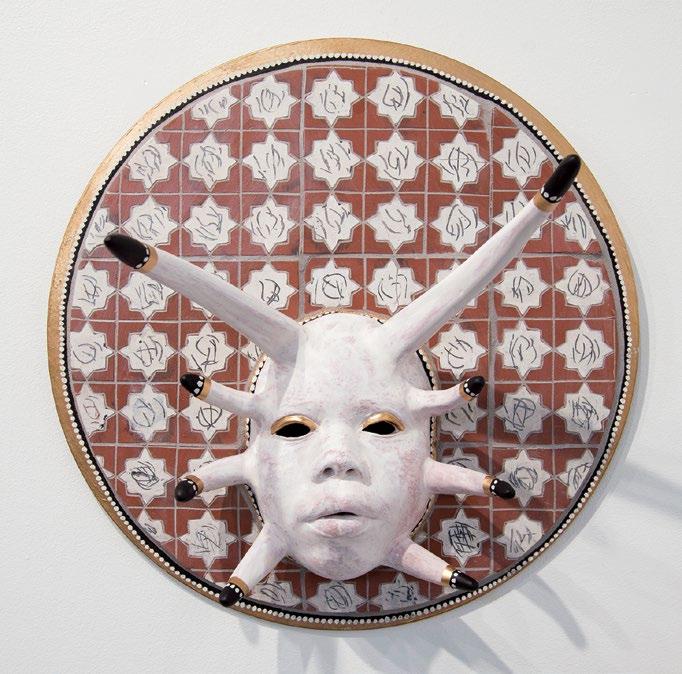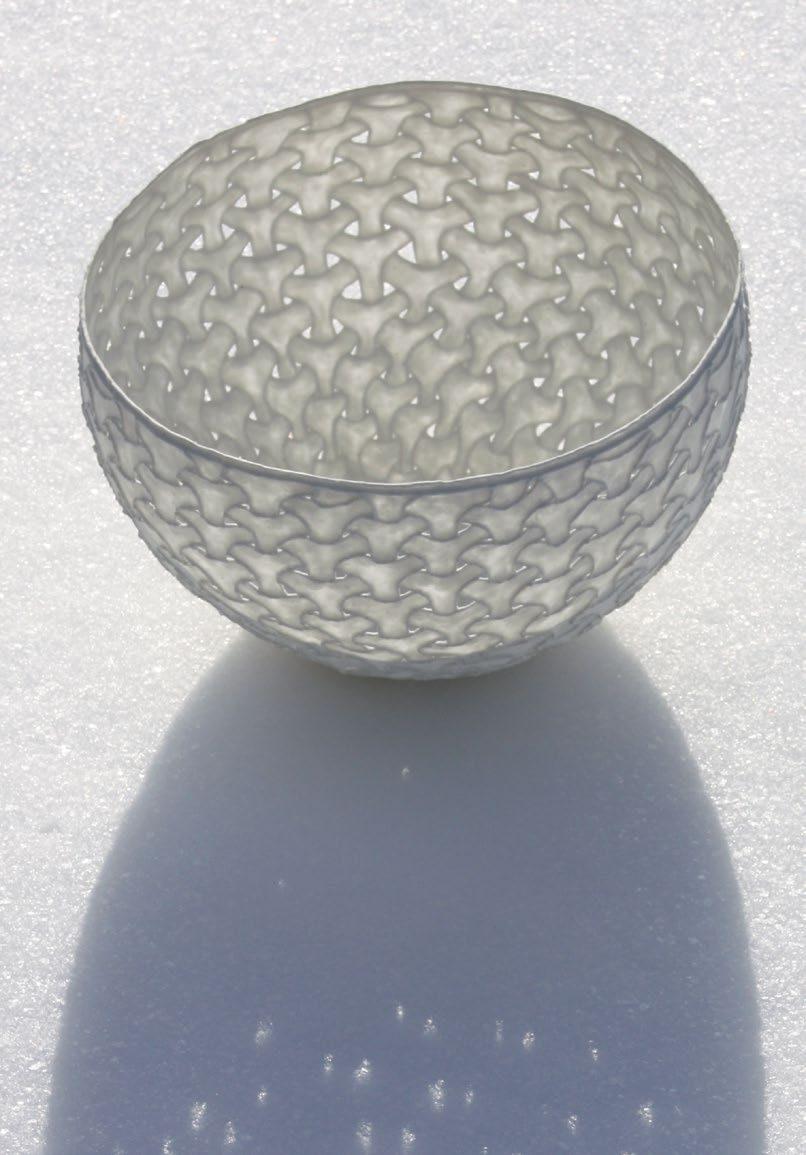
8 minute read
Mathematical Patterns in Clay
Guy Van Leemput
Above: A Bigger Mind (in the snow), 11 in. (28 cm) in diameter, woodfired porcelain, 2020. Opposite top: A Bigger Mind (alternate view), 11 in. (28 cm) in diameter, wood-fired porcelain, 2020. Opposite bottom: Big Mind Circles, 101/4 in. (26 cm) in diameter, wood-fired porcelain, 2020. Photos: Dirk Theys. Editors: How do you come up with the surface patterns that are prevalent in your work? Guy Van Leemput: I have been fascinated by patterns since I was a child, especially patterns in nature, such as the arrangement of seeds on a sunflower, the scales on a large pine cone, or the arrangement of spines on a cactus. They are the result of nature’s solutions to complicated problems. Later, I understood that you can use mathematics to investigate how these patterns come about. I learned how the eye sees two sets of opposing spirals in each sunflower; if you count the number of spirals in a set, these numbers always turn out to be two consecutive numbers in the Fibonacci sequence. Later, I discovered that the golden ratio is the basis for the Fibonacci numbers and all those beautiful patterns. And that our brains (and certainly mine) want to order, structure, and catalog everything. The eye always wants to see patterns.
Advertisement
When at school, I was introduced to the graphic work of M.C. Escher, which I found intriguing. He copied the Moorish patterns from the Alhambra in Granada, Spain, and used them as a basis for his graphics. I was actually more interested in the origin of those original patterns. How did people in history manage to find them? I studied historical examples, did extensive research into tiles, and wrote a treatise on tiling the plane to get my master’s degree in mathematics.
I don’t want to imitate nature, but to understand it, to recognize patterns and vary them. You can discover these variations through mathematics.
Eds: How did you decide to switch from a career as a mathematician to one as a ceramic artist? GVL: For me, working in ceramics is much more than a choice, rather it was more something I could not avoid. The summer before I started studying mathematics at university, I asked a local ceramic artist if I could come and work with him, not for payment but to learn. And I continued to do so throughout my studies and the years that followed. My work as a math teacher as well as having a young family pushed my own ceramics work into the background, but after the death of my best friend, I realized I wanted to take it
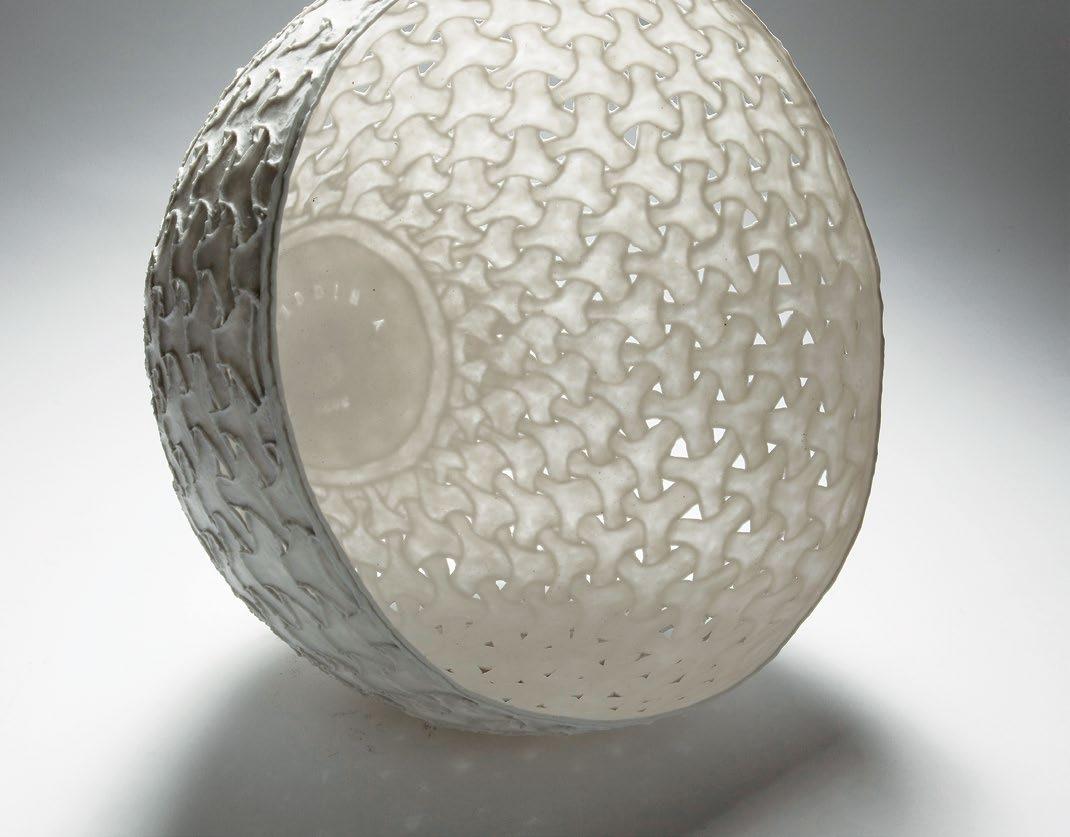

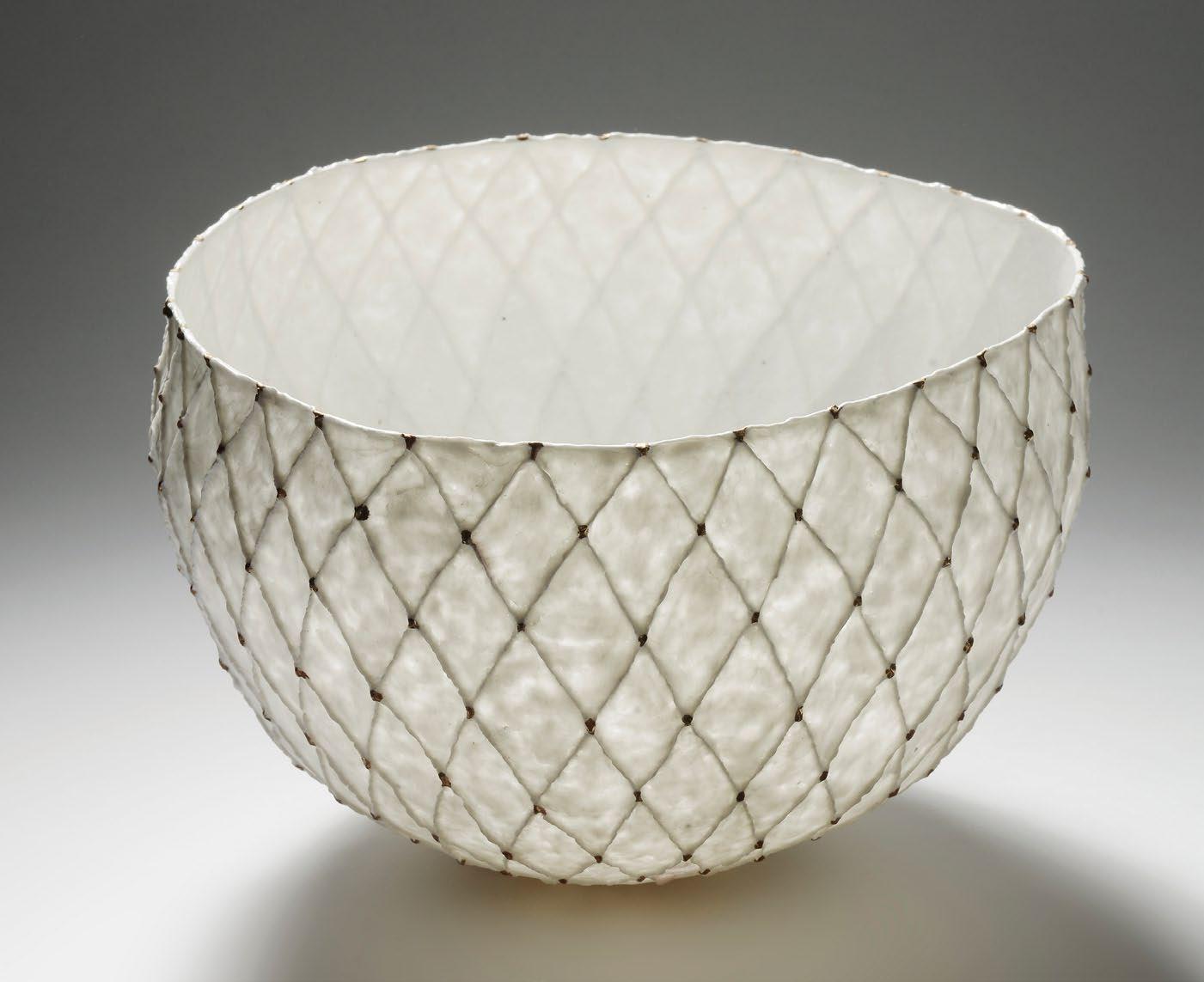
You Are My Cathedral, 101/4 in. (26 cm) in diameter, wood-fired porcelain, gold, 2019. Photo: Dirk Theys.
more seriously. For eight years, I attended ceramics classes at the Academy of Fine Arts in Herentals and I followed several master classes. About ten years ago I founded my studio, which specializes in delicate translucent porcelain.
For me, working with clay is yoga of the mind. In my studio, I can forget the daily sorrows. There I find my peace. When I am working on a new bowl (formed over an inflated balloon for support), it is very clear to me what has to be done, and all of my attention focuses on the work. I have to monitor the moisture content of the porcelain; in order for my process to be successful, it must not be too wet or too dry. I also have to be careful because the balloon support can break down quickly. So there is no time to worry or think about other things. Being fully present with the bowl that I am forming is a wonderful gift.
Eds: In what ways has your former career and related research influenced your work? GVL: When I taught mathematics full time, it was part of my routine that on my days off I would make ceramics. The patterns I made on my bowls then were spontaneous and intuitive. Then, after 25 years in the classroom, I had the opportunity to take up an artist residency in Jingdezhen. So, I took time off from school and enjoyed my time in China to the fullest. Back home, I noticed that mathematics showed up in my ceramic work. It was nice to see that the two parts of myself (the ceramic artist and the mathematician) had finally found each other again.
I started to draw more in my sketchbook. Often, I start from regular patterns like hexagons that tile the surface. I then investigate how I can transfer such a two-dimensional grid to a sphere. Mathematics gives me many possibilities to work with this. For example, I can add pentagons so that the tiles remain the same size everywhere, or I can make the shapes gradually smaller toward the bottom. I can also use non-Euclidean geometry to make it look like there are an infinite number of tiles on the bowl. I like the pattern to continue to amaze, day after day. That is why I look for small variations that break the known sequence and size of shapes.
At one time, I had filled a sketchbook with drawings of overlapping circles and I went back to work on that too. One day I saw the pattern of the piece titled Circles of Mind emerging there in my sketchbook. I was euphoric because it had exactly what I was looking for: it gave a three-dimensional effect, as if a number of scales were woven together. I made a small version, then a larger piece, Big Mind Circles, on which I spent more than 30 hours modeling. Later I explored how to enlarge and reduce this underlying regular grid in certain places, which resulted in the pattern on the piece titled A Bigger Mind.
Building a Translucent Vessel
I start by blowing up a balloon, then drawing a pattern on the surface (1). I place thin slabs and coils of porcelain reinforced with flax fibers directly onto the balloon, starting at the top of the balloon, which will be the bottom of the future bowl. First I place a small piece of porcelain with my stamp on it (2), then add little cells one by one by manipulating the porcelain with small wooden tools, trying to not touch it too much with my hands (3, 4). I place thin coils of porcelain onto the balloon, following the drawn pattern as a guide. Using a wooden tool, I blend the left and right sides of the coil into the clay below, leaving the center of the coil raised to delineate the pattern. I can only complete small sections each day (5, 6). After quite a while (a week, sometimes a month), when the piece is finished, it has to dry evenly. Then, I deflate the balloon and coat the inside with a layer of porcelain slip.
As my bowls are fired upside down to counteract the effects of gravity and the melting process at high temperatures, I have to make a support for each piece (7, 8). Then the piece is once fired in a wood kiln to 2336°F (1280°C). This high temperature is needed for strength and translucency. The wood firing gives the bowl a beautiful white color and a sprinkling blossom of glaze from ash deposits.
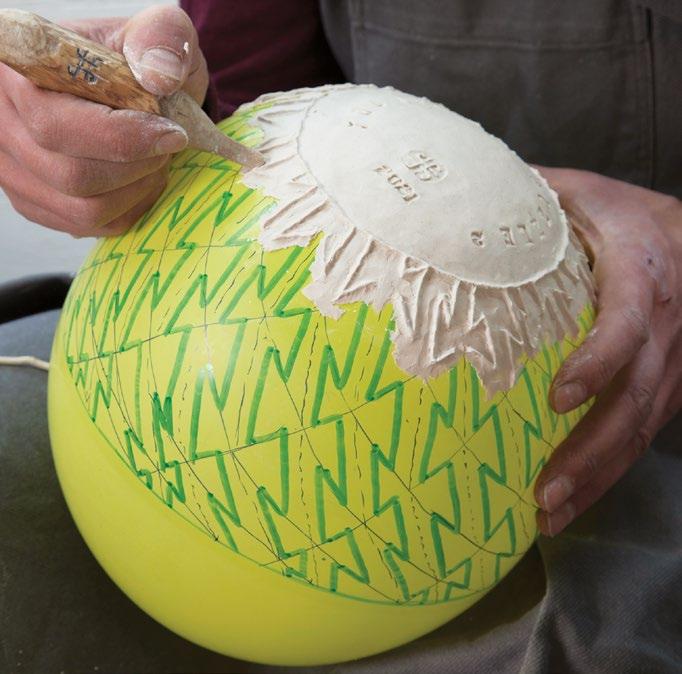
1 2
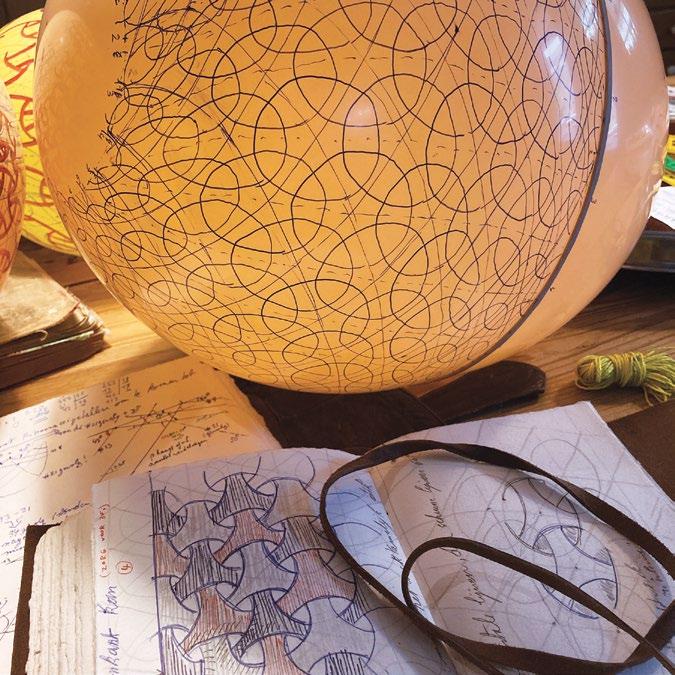

3 4
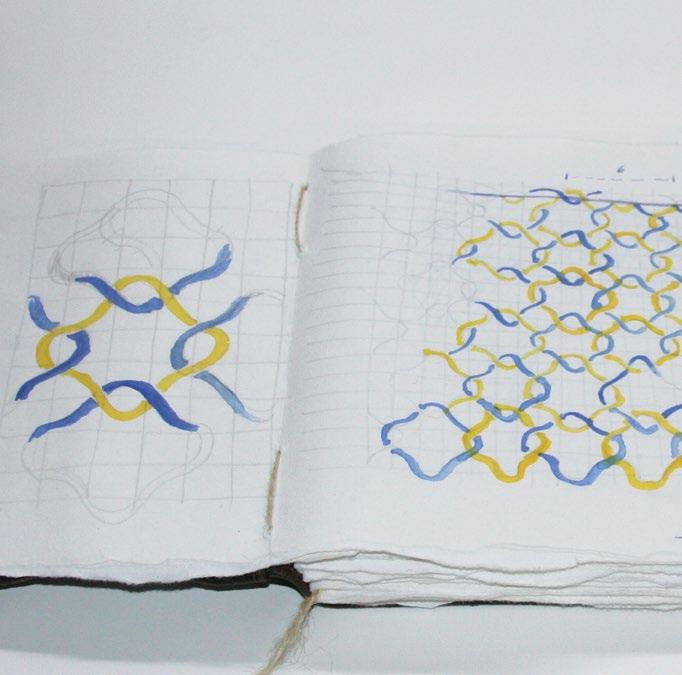
1 After finding a pattern that works, I make some preliminary drawings in a sketchbook. This helps to find out the best way to draw the pattern on a balloon. 2 You Are My Puzzle, in progress. I model the porcelain clay with a wooden tool on a balloon. I start working from the bottom of the bowl adding my artist’s stamp, the year, and the name of the work. 3 Guy Van Leemput working on two different bowls with puzzle designs; one is almost finished (foreground), while the other (You Are My Puzzle) is at the beginning stage. 2, 3 Photos: Dirk Theys. 4 In my sketchbook, I make some drawings to determine a color scheme that will work.
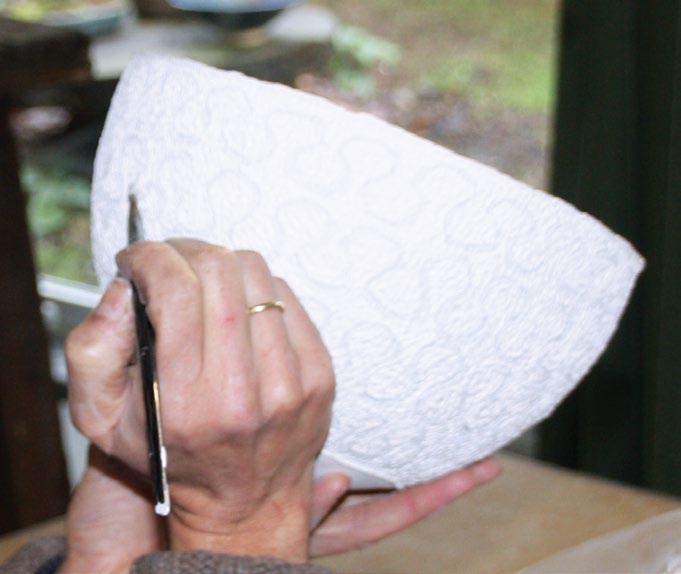
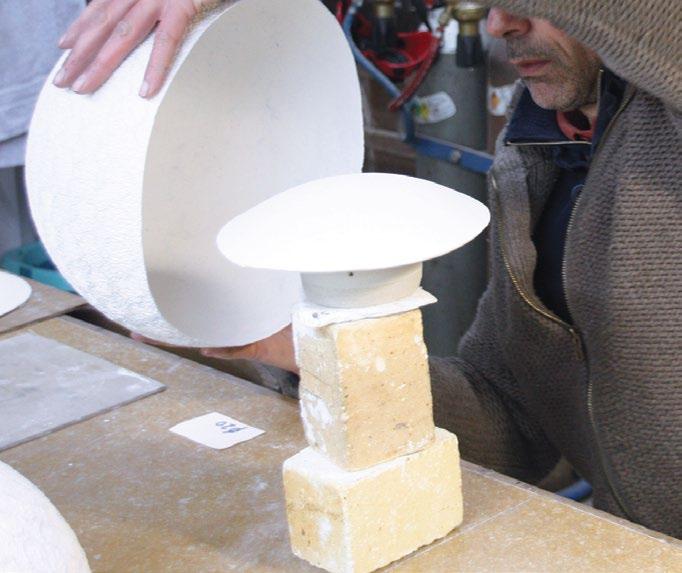
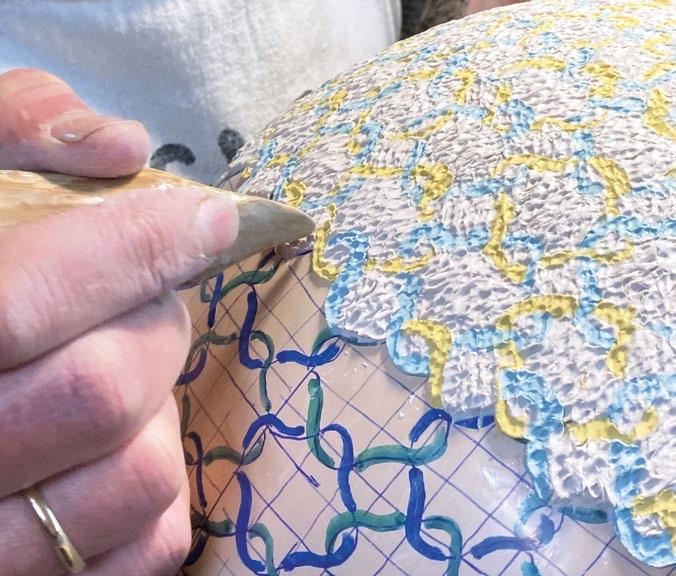

5
7 6
8

9 10
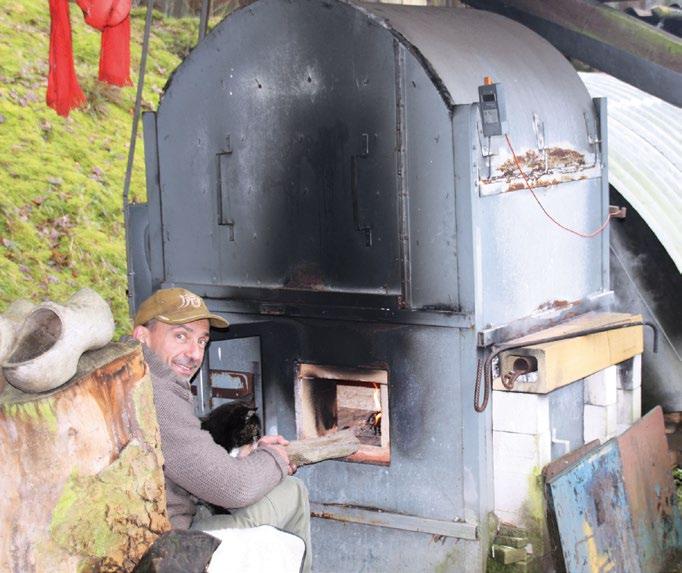
5, 6 HardWired, in progress, adding colored porcelain and using a handmade wooden tool to model the clay straight on the balloon following the lines drawn on the surface. Photos: Katrien Hautekiet. 7 Support for each piece made from porcelain, stoneware clay, and bricks, so that the bowl can be fired upside down. 8 With a small pencil, add porcelain to fix any small holes. 9 Bricking up the kiln door after all the pieces are loaded in the kiln upside down on their firing supports. 10 The door is bricked up, and the firing begins by adding wood to the firebox. 7–10 Photos: Stef Van Leemput.









